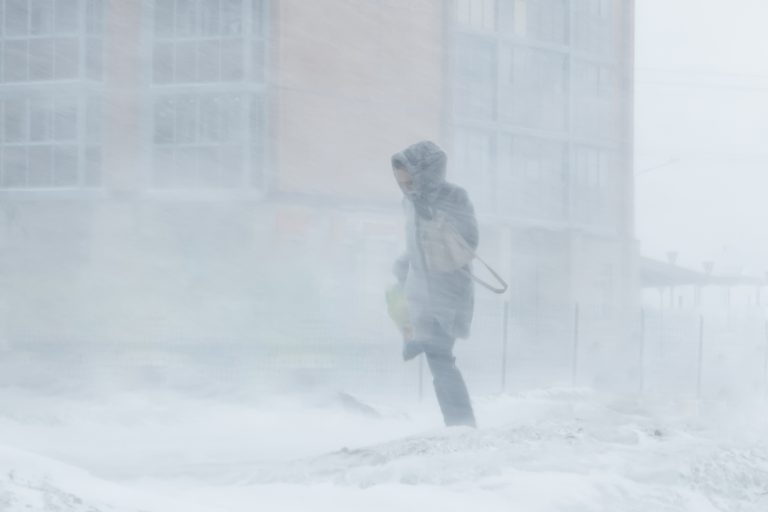A new study finds that the frequency of snowstorms in the United States may decrease in the coming decades.
Between 1996 and 2020, 13,000 snowstorms were recorded in the United States, 10,000 of which struck the Northern Plains and Upper Midwest.
But new research from the University of Nebraska-Lincoln finds that the average number of snowstorms may begin to decline within the next few decades.
“Snowstorms have a significant impact on much of our daily lives — infrastructure and transportation,” Liang Chen, an assistant professor of Earth and Atmospheric Sciences at the university, said in a summary of the findings. “In terms of planning for climate change, people want to know: In the future, how will these snow storms change due to climate warming? But there is no study looking at how they will change in the future, based on climate simulations. The main reason is: It is difficult to measure “

Alexander Bekhtev/Getty
There have recently been milder winds and lighter snowfall in the United States due to a warming climate, which in turn may affect the intensity of snowstorms.
Until now, these weather events have been difficult to track using climate data. But using a new model, Chen and his colleagues used daily snowfall and wind speed data to analyze the amount of snowstorms that occur. They then used this model to estimate the long-term future, in the years 2030 to 2059, to 2060 to 2099.
They tested these years alongside estimates of future greenhouse gas emissions. The results showed that a gradual decrease in these winter storms is possible, taking into account the warming climate. Snow storms are expected to ease in the Midwest and Northeast.
When they focused on different states, the scientists found that Iowa could see 10 fewer days per year of strong winds. Minnesota, Kansas, Nebraska and the Dakotas will also see less wind.
Snow will also become less common as global temperatures rise. However, rainfall is expected to increase in the northern plains.
“Because of the rising temperature, the rain will fall on the ground as rain instead of snow,” Chen said. “So even though you have an overall increase in precipitation, snowfall will decrease.”
Although researchers estimate that snowstorms could decrease in numbers overall, there are more questions that need to be answered.
It is possible that these snowstorms will become stronger or weaker as a result of climate change, but more studies are needed to evaluate this.
Chen's next steps are to analyze why snowstorms increase or decrease between decades.
“Most of my previous research was on extreme summer events, such as heatwaves, droughts and heavy rains,” Chen said. “But extreme winter weather also has an impact, especially in Nebraska, and we are interested in seeing its trajectory in a warming climate. I hope our study will provide a better understanding of winter extremes and benefit our local community.”
Do you have advice on a science story Newsweek should cover? Do you have a question about snow storms? Let us know at science@newsweek.com.
Uncommon knowledge
Newsweek is committed to challenging conventional wisdom and finding connections in the search for common ground.
Newsweek is committed to challenging conventional wisdom and finding connections in the search for common ground.

